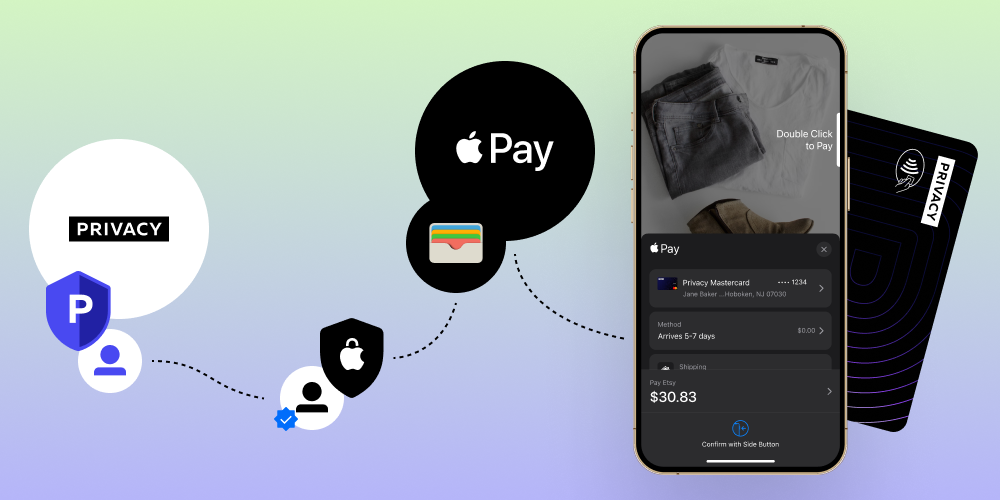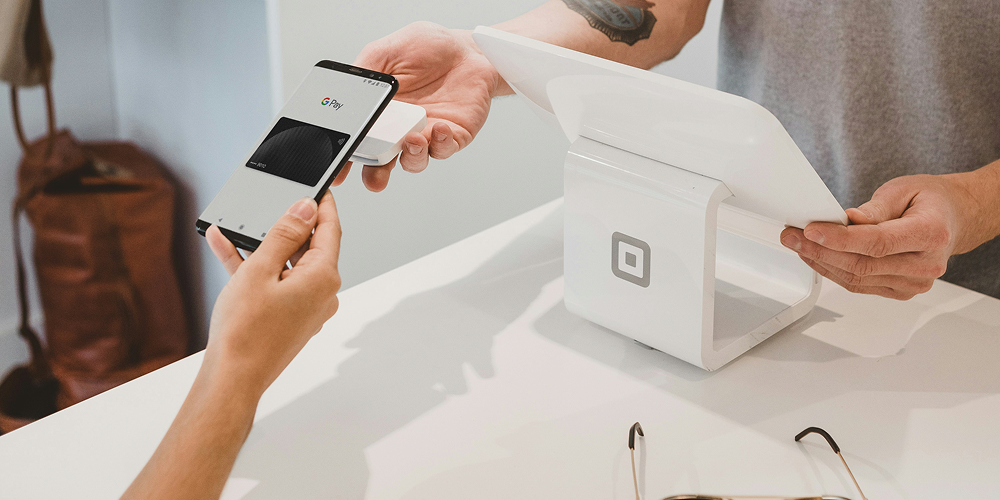A Guide to Securely Using Privacy Cards with Apple Pay and Google Pay
Some of you have written in with questions about the privacy of Apple Pay and Google Pay, and how Privacy works with these services. We put together a quick primer on Apple and Google’s data collection policies regarding their payment services, and how you can take control of your privacy when using digital wallet cards.
Note: This information reflects the privacy policies of Apple Pay and Google Pay as of March 2025. These policies may have changed since then, so we recommend reviewing the latest versions directly. You can view our most up-to-date privacy policy here.
Our commitment to your privacy
As a payment provider, we are required to collect and store certain information to offer our services. However, privacy and security are at the core of everything we do. We are committed to collecting only the data necessary to provide our service while ensuring you stay in control of your payments and personal information.
Apple Pay: What Personal Data is Shared and Collected

When you connect your Privacy Card to Apple Pay, Privacy shares the following personal information with Apple:
- Your first and last name
When you connect your Privacy Card to Apple Pay, Privacy may share a redacted version of the following information with Apple for security and verification purposes:
- Your phone number
- Your email address
Privacy does not share the following information with Apple:
- Your full phone number or email address
- Your address
- Any other personal information you have provided Privacy, such as your SSN
Additionally, Privacy does not share your transaction history or financial information with Apple, except for details related to transactions made using the Privacy Card linked to your Apple Wallet.
When you link a Privacy Card to your Apple Wallet, only the last four digits are shared with Apple. Your full card number remains private—Apple doesn’t access or store it. The linked Privacy Card is transmitted securely and stored in an encrypted format on your device's Secure Element, a secure chip that isolates payment data from iOS and iCloud. When you make a payment with Apple Pay, the Secure Element generates a unique code, or token, for each transaction, keeping your actual card number private and secure.
Apple Pay: What Other Information Is Collected?
According to Apple, additional information is collected when a card is added to the Apple Wallet, presumably from your device:
Personal Details
- Basic account information (name and Apple ID)
- Device identifiers
- General location data
- Purchase history, including transaction amounts, dates, and merchants
Other information that may be collected
- Purchase history, including transaction amounts, dates, and merchants
- Device settings and use patterns, to determine eligibility
Apple emphasizes that it doesn't track, keep, or share transaction data that could be tied back to you as an individual, and similar to Google, also doesn't use your payment information for advertising.
Google Pay: What Personal Data Is Shared and Collected

When you add your Privacy Card to your Google Wallet, Privacy may share a redacted version of the following information with Google for security and verification purposes:
- Your phone number
- Your email address
However, Privacy does not share the following information with Google:
- Your full phone number or email address
- Your first and last name
- Your address
- Any other personal information you have provided Privacy, such as your SSN
Privacy also does not share your transaction history or financial information with Google, aside from the data necessary to process transactions made with your Privacy Card in Google Wallet.
The last four digits of your Privacy Card are shared with Google, but only an encrypted version of your full Privacy Card number is shared. This information is stored securely on Google's protected servers, and similar to Apple, tokenized to process your transactions.
Google Pay: What Other Information Is Collected?
Google also claims to collect additional customer data from Google Pay users when a payment card is added to its service, presumably from information stored in your device:
Personal Details
- Your name, email address, and phone number
- Birth date and address(es)
- Device details (model, operating system, IP address)
- Precise location data (only when enabled)
Other Information that may be collected
- Purchase history
- Bank account details when linked
- Location info
- SMS Messages
- Installed apps
- Photos, addresses, and contacts
- Your in-app searches
- Crash logs, diagnostics, and other app performance data
Google says it collects this information for security, compliance, and to support the functionality of its services. The company makes clear that it does not sell transaction data to third parties or use it across other Google services for advertising purposes—practices that some banks and financial institutions may engage in with customer payment data.
What Data is Shared with Merchants You Shop With

When you use your Privacy Card—or any other payment method—via Google Pay or Apple Pay, Google and Apple share limited information with the merchant as required to complete the transaction. This type of data sharing is a standard part of payment processing and occurs regardless of which card or digital wallet you use.
However, digital wallets can bring additional security to payments by using tokenization, encryption, and your device’s built-in security features, such as biometric authentication. Tokenization is a process that replaces your card’s 16-digit primary account number (PAN) with a secure digital token. This is one of the core security features of digital wallet payments and means that merchants never see or store your actual card details, further limiting your exposure.
Apple Pay: What Data is Shared During Checkout?
- Device or merchant-specific account numbers (in place of your actual card number, a process called tokenization)
- Zip code or equivalent, if required for calculating tax or shipping costs
- Shipping address & email associated with your Apple account, if required by the merchant
Google Pay: What Data is Shared During Checkout?
- Virtual account number (in place of your actual card number, a process called tokenization)
- Zip code or equivalent, if required for calculating tax or shipping costs
When you use Privacy Cards with these services, the merchant does not receive:
- Your actual Privacy Card number
- Your Privacy account information, including your full name or any other detailed personal information
- Any contact information you’ve provided Privacy
- Your Privacy purchase history
Note that individual merchant policies may vary, and merchants still collect their standard transaction data like items purchased and transaction amount. For Apple Pay users, some merchants may also request additional information (such as your name) for loyalty programs or receipts if you opt in to those features.
How to Limit Data Collection

Both Google and Apple allow you to adjust your settings to control the data collected and shared when using their payment services. Below are best practices to help you minimize data exposure and manage your personal information more effectively.
For Apple Pay Users
- Manage location services
- Open Settings → Privacy & Security → Location Services → Wallet
- Open When I share or Never (though some features may require location)
- Limit Wallet data stored on iCloud
- Open Settings -> your profile picture -> iCloud
- Click Saved to iCloud and disable Wallet
- Review app permissions
- Open Settings → Wallet
- Review which apps have permission to access your Wallet
- Limit analytics sharing
- Open Settings → Privacy & Security → Analytics & Improvements
- Turn off Share iPhone Analytics to reduce data shared with Apple
- Adjust Apple advertising
- Settings → Privacy & Security → Apple Advertising
- Toggle off Personalized Ads
For Google Pay Users
- Adjust your privacy settings
- Open Google Wallet
- Tap your profile picture -> Your data in Wallet -> Manage payments data
- Consider adjusting Personalization with Google Pay settings to limit how Google uses your payment data
- Limit location tracking
- Open your device settings
- Locate Google Wallet app permissions
- Consider disabling Precise Location when it's not needed for a specific purchase
- Manage activity controls
- Visit myaccount.google.com → Data & Privacy
- Review Web & App Activity settings
- Consider turning off this feature or setting it to auto-delete activity
- Regularly delete your data
- Open Google Pay
- Tap your profile picture -> Your data in Wallet -> Manage payments data
- Consider deleting your payment activity
What This Means for Your Payments
While Google and Apple’s payment platforms use encryption and tokenization to protect your data, they still collect certain personal and financial details to provide their service and share necessary information with merchants during checkout.
Understanding what data is collected and shared allows you to enjoy greater control over your personal and payment data. Additionally, employing best practices to limit data collection can help you feel more confident in your digital security, ensuring that your payment information remains as private and protected as possible while still enjoying the convenience of digital wallet payments.
